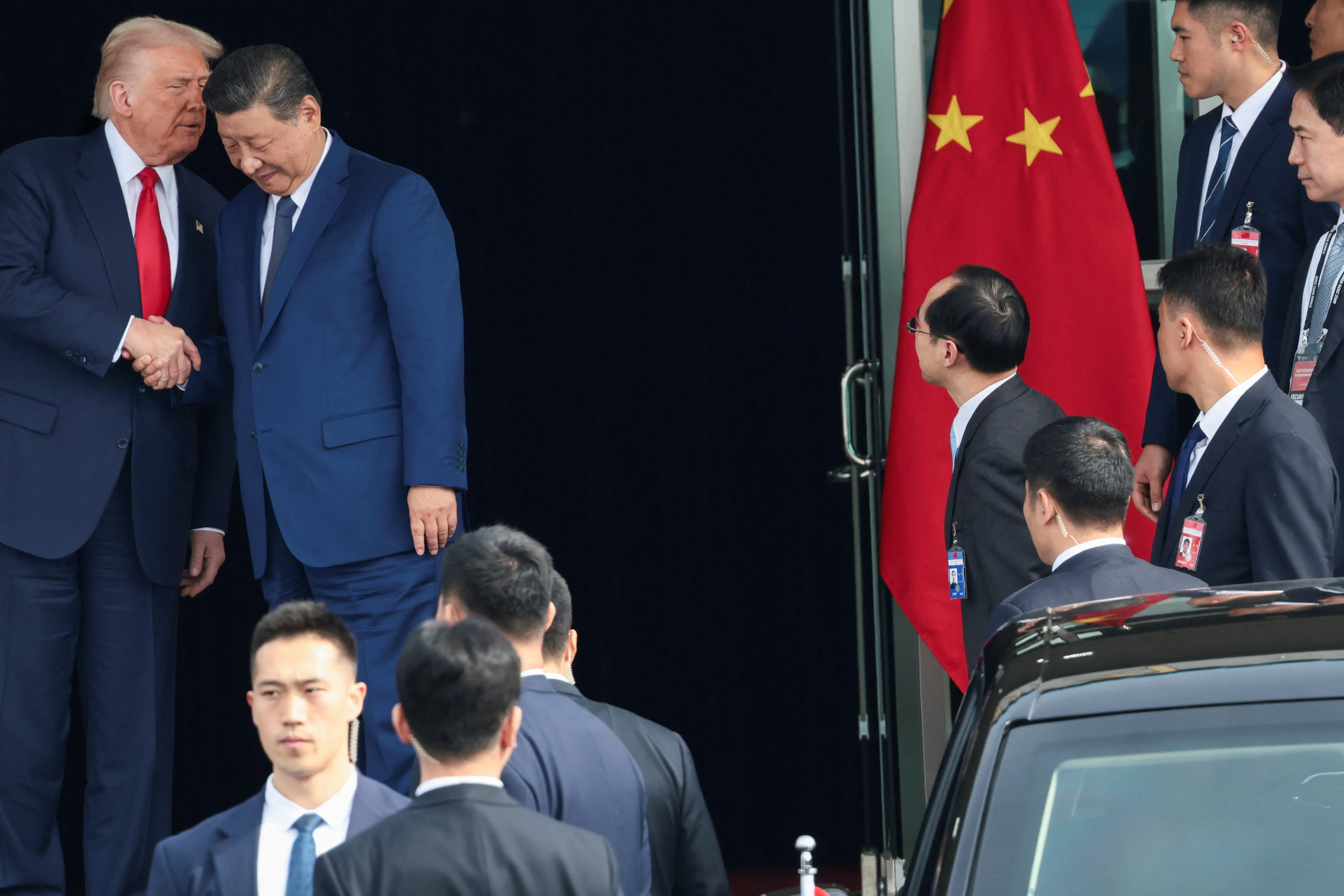Copyright scmp

China and the United States have reached a truce on thorny issues ranging from soybeans and rare earths to fentanyl, following Thursday’s meeting between Presidents Xi Jinping and Donald Trump in South Korea. Trump hailed the talks at the Gimhae Air Base in Busan as a “great success” and said he had agreed to visit China in April. He added that Xi would visit the US “some time after that”. The summit may help the two countries’ relationship enter a “more constructive phase” following a series of clashes over trade, according to observers, but they warned that a series of deep-rooted problems within the relationship could still derail any progress. The 100-minute meeting was the first face-to-face encounter between the two leaders since Trump returned to the White House in January. “Given our different national conditions, we do not always see eye to eye with each other and it is normal for the two leading economies of the world to have frictions now and then,” Xi told the US leader, according to the Chinese foreign ministry. He added he was willing to continue working with Trump to “build a solid foundation for China-US relations and create a sound atmosphere for the development of both countries”. Speaking to reporters on Air Force One shortly after he left South Korea, Trump said the two leaders had “agreed to almost everything” and described the summit as “amazing” and a “good meeting for two very large, powerful countries”. Asked when a deal would be ready, he replied: “I think pretty soon. We have not too many major stumbling blocks.” He had previously threatened additional tariffs over China’s expanded curbs on rare earths, but after the meeting he said: “We have a deal … We’ll negotiate at the end of the year but all of the rare earth [issue] has been settled. “There’s no roadblock at all on rare earth. That will hopefully disappear from our vocabulary for a little while.” Following the summit, the Chinese Ministry of Commerce said the country’s latest curbs on rare earth exports – announced earlier this month – would be paused for a year. Trump added that fentanyl – another long-standing source of tension – was a complex issue, but the two leaders “agreed that [China] was going to work very hard” on it and take some “real action”. Washington, he continued, had agreed to halve its fentanyl-related tariffs on China from 20 per cent to 10 per cent. The move also reduces the overall tariff rate on Chinese imports from 57 per cent to 47 per cent. During his first term, Trump placed sanctions on China, which he accused of failing to stop the export of the chemicals used to make the synthetic opioids that have been blamed for hundreds of thousands of deaths in the US. Trump said Beijing had also agreed to buy “tremendous amounts of soybeans and other farm products” immediately. According to American agricultural lobby groups, China had already made its first soybean purchases from this autumn’s US crop ahead of the meeting. The US leader added that other topics discussed included chips and ways of working together to end the Ukraine war, but he said Taiwan – one of the most sensitive topics in their relationship – “never came up”. There was no reference to the issue in statements from the Chinese side. Before the meeting, there had been speculation that Trump would shift Washington’s long-standing position on Taiwan to reach a deal with Beijing. Beijing sees Taiwan as part of China and has never ruled out the use of force to reunify it with the mainland. The US, in common with most countries, does not recognise Taiwan as an independent state, but Washington is opposed to any attempt to take the island by force and is committed to supplying it with weapons to defend itself. “Overall, I guess on the scale of zero to 10, with 10 being the best, I would say the meeting was a 12 … The whole relationship is very, very important,” Trump said. Xi told Trump: “China-US economic and trade relations have experienced ups and downs recently, and this has also given the two sides some insights. “The business relationship should continue to serve as the anchor and driving force for China-US relations, not a stumbling block or a point of friction.” He added: “The two sides should think big and recognise the long-term benefit of cooperation, and must not fall into a vicious cycle of mutual retaliation.” The Chinese leader also stressed that dialogue was better than confrontation, adding that communication between the two countries should be maintained “through various channels and at various levels to enhance mutual understanding”. The report said the two sides had also agreed to cooperate on trade, energy and other areas as well as promote people-to-people exchanges. Beijing also said the two leaders had agreed to maintain regular exchanges but was more vague about the possibility of each visiting the other country. The foreign ministry’s statement said only that Trump “looked forward to visiting China early next year” and that he had invited Xi to America. Dylan Loh, an associate professor at Singapore’s Nanyang Technological University, said the Xi-Trump meeting was consequential because it addressed a number of “irritants” both old and new in US-China relations. “The agreements reached on rare earths, soybeans, fentanyl and the possibility of loosening chips restrictions would create conditions to inject stability into the relationship,” he said. He also said the “positive comments and conciliatory tone” from both leaders were significant because they signalled to both government officials and their respective publics “that there is scope to bring the relationship back to a more normal track”. Loh added that “US-China competition is not going to stop” because of the summit or Trump’s possible visit to China. “What the meetings do, however, is to help reduce instability and volatility,” he said. According to Sun Chenghao, a fellow at Tsinghua University’s Centre for International Security and Strategy, the summit generated positive momentum for future relations and effectively prevented a further escalation of tensions. He said the two leaders had provided “clear, top-level direction” for the two countries’ trade relations and he expected a “relatively stable frequency of talks” between high-level officials as the two sides focused on implementing the agreements they had reached. “Based on the consensus reached and Trump’s planned visit to China, US-China relations are expected to enter a more constructive phase in the short term,” he said. But Sun warned that even if the meeting had helped to reopen communications channels between the two sides, deep-seated structural issues – ranging from technology controls to industrial policies and market access – remained unresolved, which meant that a more comprehensive deal would be more difficult to achieve. He also warned that there were differing voices on China within the Trump administration, and that those who had been calling for a tougher approach towards Beijing could still disrupt the relationship between the two countries. Han Shen Lin, the China managing director for The Asia Group, said sustained de-escalation in the near term was possible, but relations were “fragile” and depended on factors such as China’s fentanyl crackdown or US tariff relief. “Domestic politics could also derail progress if either side seems weak. Notwithstanding the occasional flare-ups, the truce should hold enough for future Trump-Xi talks to continue, which is better than an unchecked trade war,” he said. The meeting took place in South Korea ahead of this year’s Asia-Pacific Economic Cooperation (Apec) forum in Gyeongju. Trump arrived in the country on Wednesday, when he met President Lee Jae-myung, but will not stay for the Apec summit and left soon after his talks with Xi finished. Xi, who arrived in Busan the following day, is expected to stay in the country for three days. The trip is likely to include a meeting with Lee as well as the Apec event. Additional reporting by Kandy Wong



